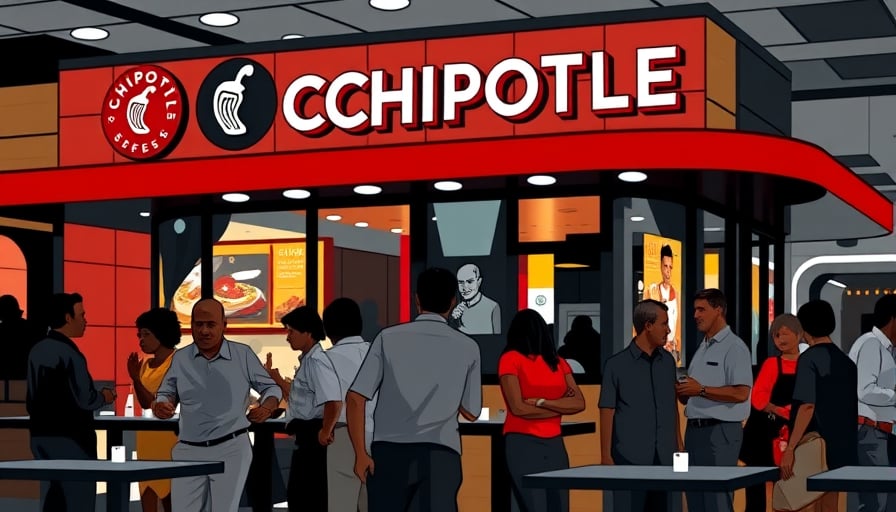Chipotle Mexican Grill Inc. Faces a Crucial Juncture
Chipotle Mexican Grill Inc. (NYSE: CMG) has long been hailed as a model of rapid expansion and disciplined cost control within the fast‑food sector. Yet, the past week has revealed a mounting convergence of cautionary signals from the investment community, a trend that could reshape investor expectations and the firm’s valuation trajectory.
UBS Shrinks the Target: From 65 USD to 56 USD
On 20 October, UBS analyst Dennis Geiger lowered the target price for Chipotle from $65 to $56, a 14 % contraction that reflects growing skepticism about the company’s capacity to sustain its recent revenue growth. UBS also warned that the upcoming third‑quarter earnings report could “fall short of expectations,” citing a potential earnings and guidance shortfall that might undermine the bullish narrative that has dominated the stock’s recent performance.
The reduction was echoed by KeyBanc, whose analyst Eric Gonzalez trimmed his objective from $58 to $52. Both houses, while maintaining a “buy” stance, now signal that the path to the $66.74 52‑week high appears steeper and more fraught.
Analyst Consensus: A “Potential Earnings Shortfall”
Beyond UBS, a broader chorus of analysts has expressed concern. The feed from seekingalpha.com (14:36 UTC) reported that Chipotle “faces potential earnings and guidance shortfall,” a theme that also appears in the news-gazette.com coverage of the price cut. The warning is not limited to price targets; it extends to the company’s ability to deliver the earnings momentum that has justified a 36.98 price‑earnings ratio—a figure that, while justified by recent growth, remains high relative to peer averages.
The 5‑Year Return Narrative
Despite the downward pressure, it is worth recalling that a 1,000‑USD investment in Chipotle on 20 October 2020 would have yielded a staggering return. According to finanzen.net, the stock closed that day at $26.97, and an investment then would have exploded in value as the company’s share price surged to the $66.74 52‑week high in December 2024. While historical performance does not guarantee future results, the 5‑year upside serves as a counterpoint to the short‑term caution.
Market Context and Company Fundamentals
Chipotle currently trades at $41.63, a 41 % discount to its peak but still positioned above its 52‑week low of $38.30. With a market cap of $56.13 billion and a 36.98 P/E, the firm sits in the upper echelon of consumer discretionary peers. Its core business model—high‑margin, quick‑service Mexican‑style cuisine—has delivered robust revenue growth and operational efficiency, underpinning the company’s valuation premium.
Nonetheless, the company’s growth strategy involves aggressive expansion into new markets, including the upcoming opening in South Champaign next year, as announced by spokesperson Annie Gradinger on 20 October 2025. While such expansion can drive revenue, it also risks diluting margins if not executed with precision.
Strategic Implications
The convergence of analyst downgrades and earnings‑shortfall warnings suggests that Chipotle’s valuation will likely compress unless the company can:
- Maintain or exceed revenue growth rates that justify its high P/E ratio.
- Control cost escalation associated with rapid store expansion and supply‑chain pressures.
- Deliver consistent earnings guidance that aligns with or surpasses analyst expectations.
Failure to meet these objectives could trigger further price target reductions, potentially eroding investor confidence and accelerating a sell‑off.
Conclusion
Chipotle Mexican Grill Inc. sits at a pivotal crossroads. On one hand, its historical performance and business fundamentals suggest significant upside potential, reflected in long‑term forecasts that project continued growth. On the other hand, the current flurry of analyst warnings and price target cuts paints a sobering picture of the near‑term challenges ahead. Investors will need to weigh the company’s proven ability to generate high returns against the realistic risk that its ambitious growth plans may not materialise as expected.
